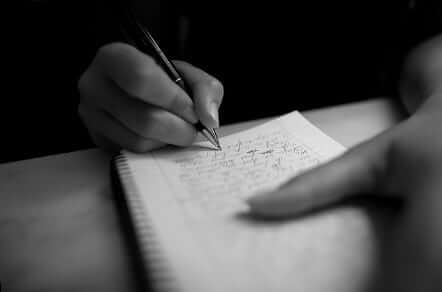When was the last time you received a handwritten thank you note? I venture to say that you can clearly recall the moment. Why is that? Because the thank you note is becoming a lost art and stands out like a neon sign.
Very few people take the time to pick up pen and paper to express their gratitude. Technology is killing the personal touch. Most people would rather text or email to convey their thanks. While it is fast and efficient, technology lacks any sort of personal connection.
The handwritten note is an especially important means of communication in both the personal and professional world. If you want to build or maintain relationships, not to mention profit in the business, you need to understand the value of the writing notes by hand.
If your goal is to stand out from your competition, be noticed and be remembered, the simple act of writing a note to your potential or current client or to a business colleague will help you to accomplish just that.
When should you write a thank you note?
- Whenever someone takes more than fifteen minutes to do something for you. You may simply receive the gift of someone’s time, their advice, a helping hand or an online mention. Whenever another person does something thoughtful, return the favor with a small gift of your time by writing a note. Many people tell me that they save these notes.
- Whenever you receive a gift, a handwritten thank you note is the only acceptable response. Forget sending an email or texting. Send a personal acknowledgement.
- Whenever you receive an introduction to a potential client, a handwritten thank you note is in order.
- Whenever someone gives you the gift of their time to meet with you, send that handwritten note. And always write to thank the person who has hosted you to a meal.
What are the rules for sending a proper handwritten thank you note?
- Be brief. That is probably the good news. It need not take all day. A handwritten thank you does not need to be lengthy. If that is what is holding you back, get over it. Your note does not need to exceed three or four sentences.
- Use appropriate stationary that reflects your brand. A single-sided correspondence card works as well as a fold-over note. If you are writing a note to a business client or associate, use a card or note that reflects your personal brand. For example, my business note cards are imprinted with my logo for Manners That Sell.
- Write your note in your own handwriting. At this point, most people use the excuse that their handwriting is unattractive or just plain illegible. It doesn’t matter. People do not judge you by your handwriting; but by your personal effort.
What is a simple formula to help you create a handwritten thank you note?
- Use an appropriate greeting. Begin with “Dear Mr. Jones” if this is your first time corresponding. Never use a client’s first name until you have permission. If you know the person and are on a first name basis, say, “Hi John,” or Hello John.” Always begin by using the person’s name or title and name.
- Acknowledge the gift or the event specifically. Say, “Thank you for the book,” or “Thank you for lunch.”
- Mention how you will use the gift or remember the event. “I will enjoy reading the book and am sure that it will be useful.” For lunch or dinner, write about how much you enjoyed that particular restaurant—calling it by name—and describing a specific aspect of the meal or conversation.
- Close with another thank you. Don’t feel you are overdoing it to repeat your appreciation. You are reinforcing your gratitude.
- Use an appropriate closing. Depending upon your relationship, use the words, “Regards,” “Sincerely,” “All the best,” or whatever feels comfortable for the situation.
Last tip: Keep your thank you notes or correspondence cards close at hand along with stamps. That will make it easy for you to return to your office and dash off a thank you without delay.
The polished professional does not hesitate to do all that it takes to impress a client or colleague. Attention to basic business etiquette can go a long way toward building your professional image and causing you to be remembered when it’s time to discuss that next business deal.


